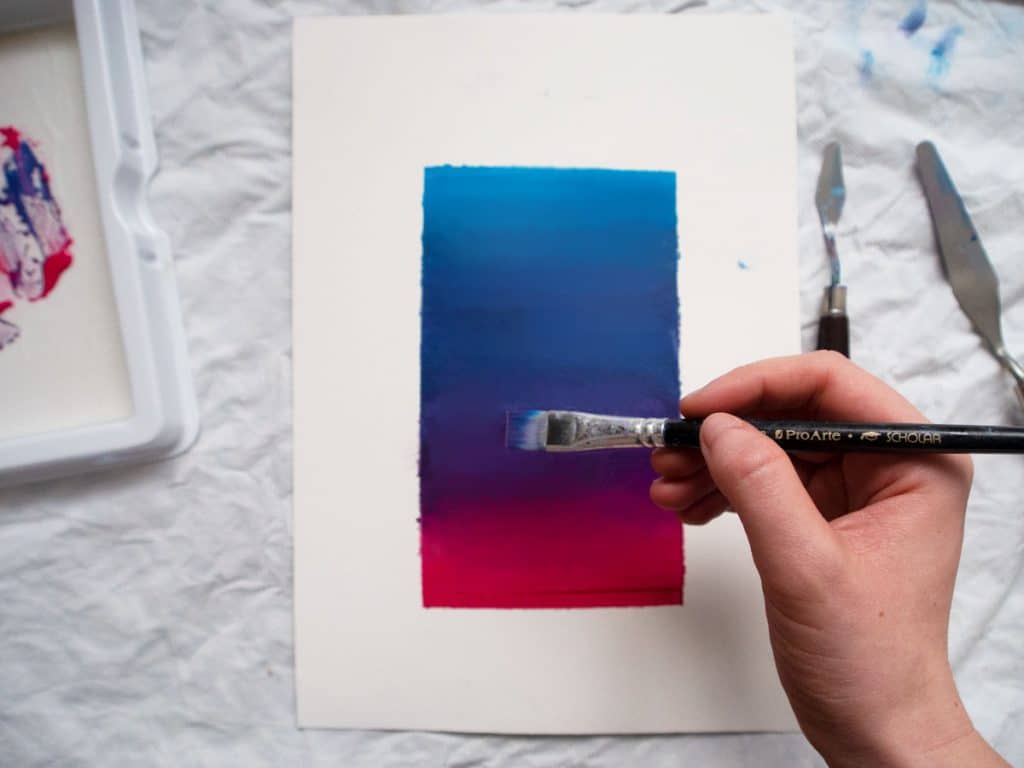Learn how to blend acrylic paint: which supplies you need and the steps to take to create seamless gradients.
Acrylic paint straight from the tube dries fast, which makes it difficult to blend. Luckily, there are multiple ways to make acrylic paint dry slower making it easier for you to create blends and gradients in your paintings.
Blending is an essential technique in painting, especially if you want to achieve realism. Aside from creating smooth gradients in skies or backgrounds, you’ll want to blend paint to create soft edges. A soft edge is a natural blur, where one object transitions to another. Use blended edges to create distance, focus and objects appear more three dimensional. An example of where you might use this technique is if you are painting a seascape, quite often where the sea meets the sky at the horizon, the edges appear slightly blurred together.
Acrylic paint can be versatile and used with techniques such as blending, as long as you have the materials to do it.
Disclaimer: Fine Art Tutorials is a reader supported site. When you make purchases through links on this site, we may earn a small commission at no extra cost to you.
Supplies you need to blend acrylic paint
Slow drying acrylic paint

This is one option to consider. It’s not the cheapest option as you will have to get new acrylic colours instead of buying a medium to mix into paints you already have.
Golden’s Open Acrylics increase the open working time of acrylic paint so that they are similar to oils. This means that paint can take between a few hours and a few days to dry, depending on how thickly it has been applied.
These paints are artist quality, with a high pigment load and a thick consistency.
Open Acrylics are the slowest drying acrylic paints, because of this they are perfect for use with the wet on wet blending technique that I will outline later in this guide.
Slow Drying Mediums
If you are using Golden’s Open acrylic paints, you don’t need to add a slow drying medium to the mix too. You can choose between one or the other.
If you already have a large set of acrylic paint colours, it would be more economical to buy a medium and mix it into your paints rather than buy a whole set of Open Acrylics. Mediums come relatively cheap and they last a long time.
A tip when using slow drying mediums, is not to layer faster drying paint layers on top of slow drying layers that are not fully dry to the touch. A paint film will adhere better when slower drying paint mixes are layered on top of faster drying paint films.
There are three different types of slow drying mediums to suit different needs…
Fluid Retarder Medium
Fluid retarder slows the drying time by 50% and is great for the wet on wet blending method. This medium doesn’t increase the open working time as much as Golden’s Open medium, but it would work if you just want to slow the drying time a little, or if you’re working on smaller pieces. No more than a 25% ratio of the fluid retarder should be mixed into paint.
Open Medium
To slow drying time even more, consider getting Golden’s Open medium. You can extend the open working time of acrylic by around 3 hours. However, the film of paint can be reopened (with application of water) for a further 12 hours and the film won’t become touch dry for 24 hours.
There are a range of open mediums to choose from, including matte paste and gloss. Each will give your paint different properties. Choose one based on the effect you want to achieve in your painting.
Glazing medium
Glazing medium is perfect for creating transparency, this is essential if you are using the glazing method to create a blended appearance in your painting. A glazing medium will also make the paint runnier and slower drying.
Blending brush

A brush like the Da Vinci Casaneo in the flat shape, is synthetic and soft, perfect for blending.
When getting a brush for blending, think about how large you like to work. If you paint on large canvases, get a large brush. When working on a smaller surface, the brush tip doesn’t need to be that large for blending small areas.
Brushes for blending must be soft. As synthetic fibres are more durable and resistant to the chemicals in acrylic paint, a soft synthetic brush would be the best match for the job.
Large flat, filbert or mop shaped brushes are best for blending, as they have wide bristles that can move more paint.
Palette
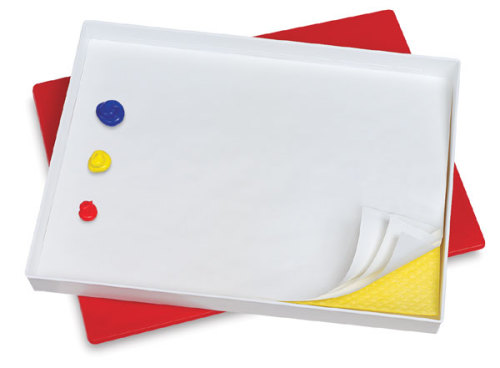
Having a palette that can keep multiple colours wet for longer is useful when using this technique. Consider getting a stay wet palette, which has a wet membrane at the bottom and seals. When used in conjunction with slow drying acrylic paint, it can keep colours wet for days.
Other supplies you’ll need
A surface to paint onto, a jar of water to rinse brushes, paper towels for cleaning, palette knives for mixing, a couple of extra brushes and masking tape if you want to create clean lines around your gradient.
How to blend acrylic paint, Method 1: Spray the Surface
This is the cheapest method as all you need is a spray bottle and water (along with the acrylic paint supplies you already have). However, there are some drawbacks to this method.
Fill a spray bottle with water and spritz some on your surface where you’ve applied the wet paint you want to blend. Then blend while the paint is wet. Bear in mind that spraying the surface with water will dilute the paint. Plus, you’ll have to work quickly, as acrylic is not resoluble when dry. So the paint will have to be wet before you spray it with water. Spraying water will increase the open time, but not by much.
Method 2: Wet on wet blending
For this technique, you will need to use your slow drying paint, or mix fluid retarder or Open Medium into your acrylic paints.
A good tip when blending with acrylics is to mix transitional colours, i.e. shades in between the colours you want to blend. So when you come to blend, the colours are not too different. This creates a smoother appearance.


To mix the transitional shades, you just have to mix your two gradient colours together in different proportions, then place these shades in between the colours you want to blend on the canvas.
Paint your first colour in a line on your canvas. Clean your brush, then paint your next transitional shade in a line so that it touches the first colour.
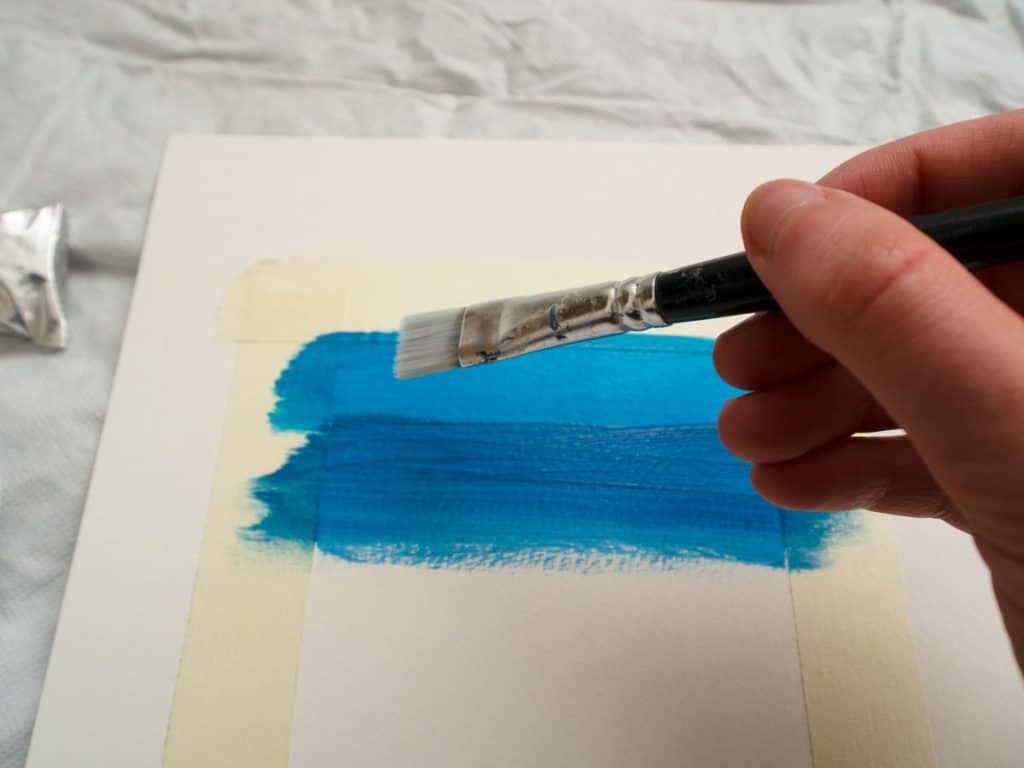
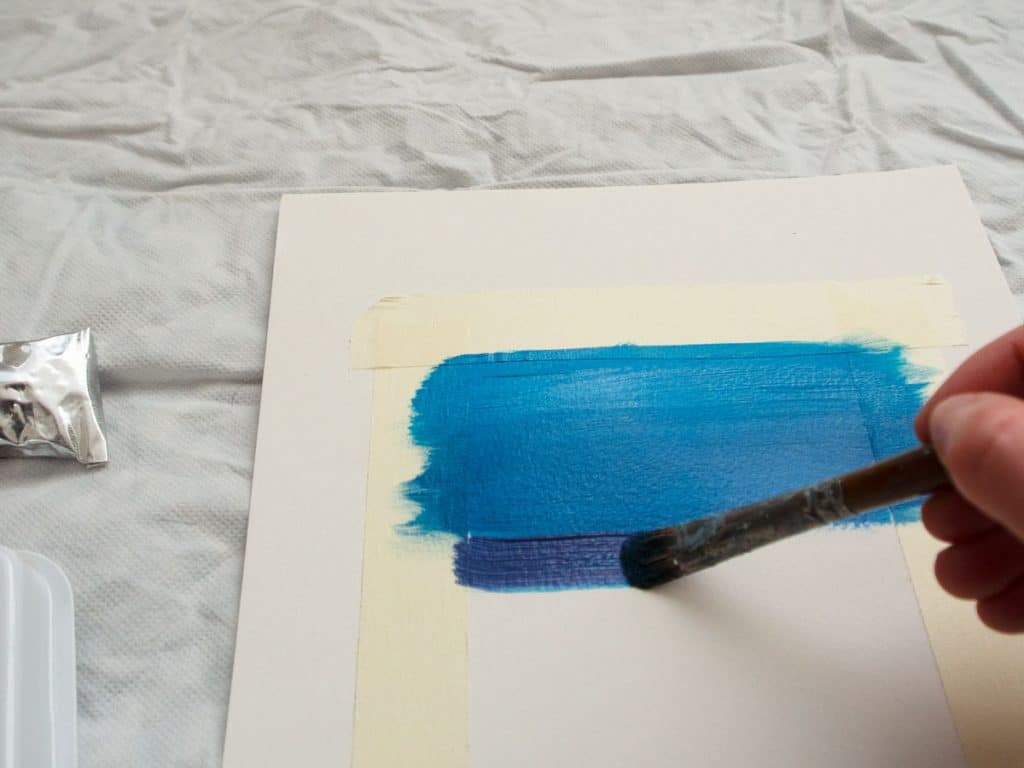
To blend the wet paint together, take your dry blending brush and work the colours together. If you are creating a large gradient, I would paint two transitional shades at a time, blending as you go. There’s no set amount of transitional shades you should mix, but the more you mix to start with, the smoother your gradient will be.
Because of the long open working time of your paint, you will have time to blend colours together, until the colours melt into one another. There will be less pressure to work quickly.
To make it appear even smoother, you can apply a second coat once the first has dried, repeating the steps of applying a colour, and blending as you go.

Method 3: Glazing
For this method, you can use your regular acrylic paint and the glazing medium.
To create a smooth blend using the glazing method, there will be some wet on wet blending involved, but you will use the transparency of your glazing medium to create a smoother transition from one colour to the next.
Mix your two gradient colours. You can mix a transitional shade if you’re working on a larger area. If you have a fluid retarder, mix a little of that into your colours.
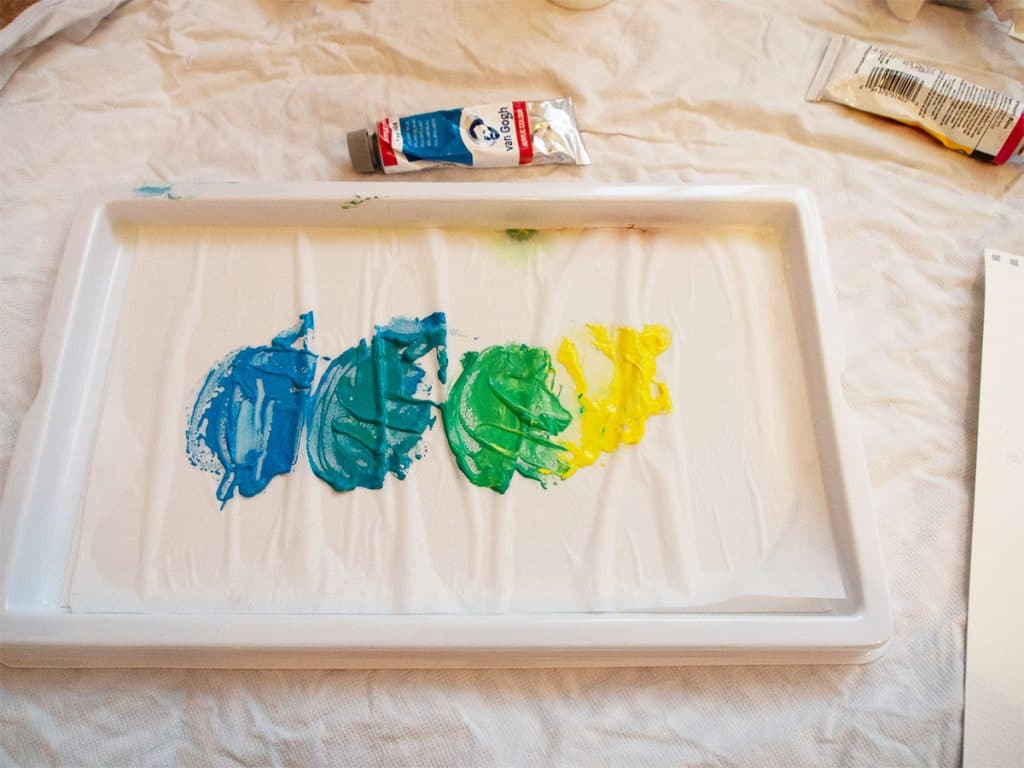

Wet your brush, then dip it into your first colour. Paint a straight line at the top of where you want your gradient to be. Clean your brush, then dip it into the next transitional shade. Quickly paint a line next to the first colour, so that the edges meet.
Take your dry blending brush and blend the two colours together.
Repeat this painting and blending step for each colour you’ve mixed.

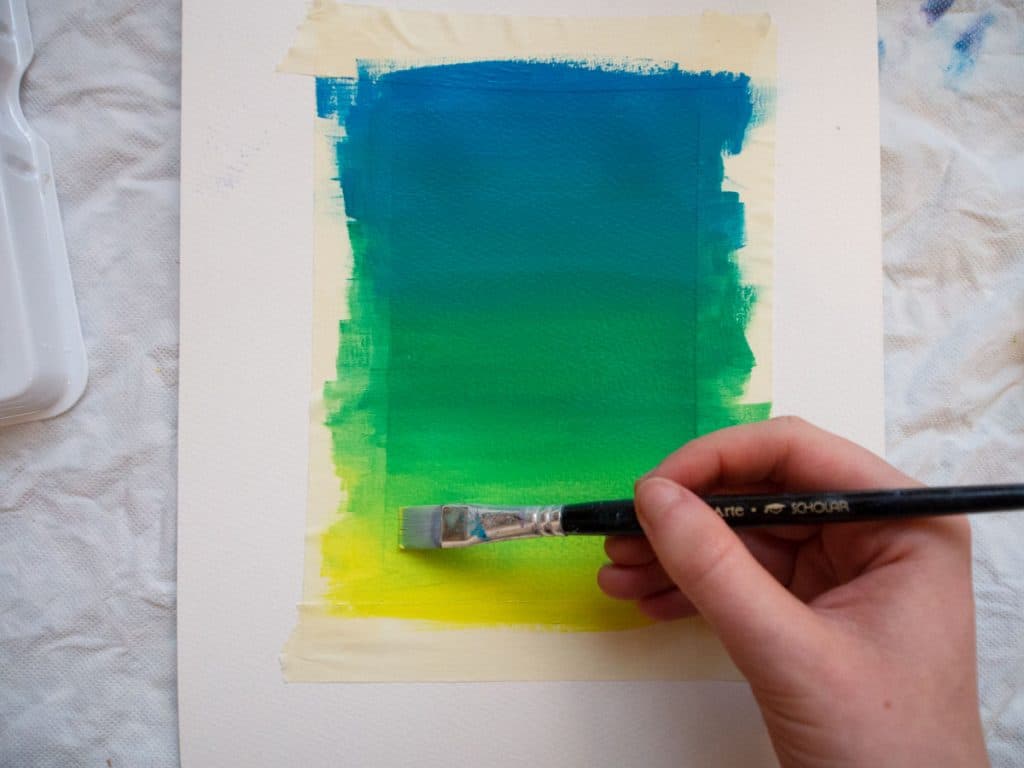
Wait for this first layer of paint to dry. This could take anywhere between 20 minutes and an hour.
Then, once the base coat is dry, mix your first colour with some glazing medium until the mixture takes on a transparent quality.
Layer this transparent mix on top of the line where the two colours meet and brush backwards and forwards to blend over the top. Take a clean brush and dip in some glazing medium, then brush the medium to spread the glazed colour into the base coat more transparently. You can take your dry blending brush to spread this out more, until you have achieved the blended effect you want.
Glaze over each area where two different colours meet with the corresponding transitional shade. You will be left with a smooth blend.

Blend acrylic paint: Pin it!
If you’ve found anything on this site especially useful, you can make a donation to me through PayPal. I take a lot of time to research and write each topic, making sure each tutorial is as detailed as possible and I make all my content freely available. Any small donation (even the price of a cup of coffee!) can help me to cover the running costs of the site. Any help from my readers is much appreciated :).
Follow the link in the button below to support this site.

